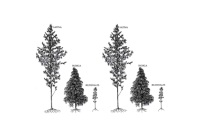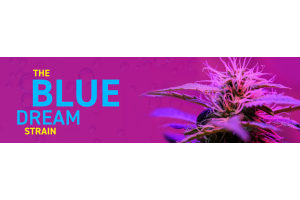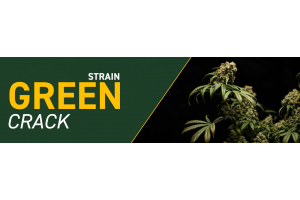Indica vs Sativa? Fact or Myth?

In the distant past, when most cannabis was Landrace genetics or hemp that was cultivated in Europe, the terms Cannabis sativa and Cannabis indica were created in order to identify the species. In modern times these terms appear to be frequently conflated with hybrid genetics that displays influences from both subspecies, making for a confusing reality for stoners, medical users or growers of all shapes and sizes. That said, there are reported differences in Indica and Sativa effects, so surely there must be a distinct difference? Read on to discover the history of Cannabis naming lexicons and our discussion of the actual difference in reported effects.
The origins of Cannabis are purportedly Central Asia and the Himalayan foothills, with some wild varieties likely stretching on the fringes of the Middle East all the way to China and Mongolia further up north. As scientific understanding developed; furthermore, biochemical evidence has emerged that supports this hypothesis. However, despite its widespread prevalence in modern indoor grows, there is no evidence of Cannabis in the Western Hemisphere before the 16th century & the nomenclature of Cannabis has been the subject of countless debates.
The terminology used to describe Cannabis at a species level has long been the object of numerous nomenclatural debates. Linnaeus, writing in Species Plantarum (1753) was the first to apply nomenclatural terminology to Cannabis when he called a single species of hemp Cannabis sativa. Linnaeus is known today as the father of modern taxonomy, thanks to his work classifying organisms. The word Sativa means cultivated in Latin, and Linnaeus would have referred to the variety of hemp grown widely across Europe for seed, fibre, and medicinal purposes as Sativa rather than the cultivars that typically get a Sativa label in today's times. The C. sativa that he would have witnessed represents a minuscule cross-section of the diversity in the Cannabis landscape. C. sativa would have produced tiny yields compared to other varieties; moreover, it would only produce a minimal overall terpene content. This monolithic classification of Cannabis was undisputed for more than 30 years until 1785, when Lamarck proposed a two species view of Cannabis. He theorised that there was the C. sativa, which was the non-psychoactive species primarily cultivated in the Western continent & Cannabis indica, which would have been the wild varieties growing in India and neighbouring countries.
A proposed third species called Cannabis ruderalis was first identified in 1924 in south Siberia by a Russian Botanist named D.E. Janischevsky, which he named Ruderalis. Ruderalis is a hardy growing variety that grows wildly in the northern Himalayas, Russia and other southern former states of the Soviet Union. The Ruderalis species is known for its generally sparse and 'weedy' growing habits as it doesn't develop flowering buds and only contains trace amounts of THC. Ruderalis grows wild in massive populations across East and Central Europe, with most of them found in Ukraine, Romania, Lithuania and their adjacent countries. Wild Ruderalis has generally been exempt from human selection, so these plants tend to be found growing in their wild state & may have lost traits that they might've been selected for at one point. Ruderalis has also been reported as potentially being a wild ancestral species to both C. Sativa & C. Indica. Due to the inherent characteristics of Ruderalis, it is rarely cultivated for medicinal, recreational and industrial use. However, it is instrumental in producing auto-flowering cannabis varieties when crossed with 'Sativa' or 'Indica' genetics. Autoflowering Cannabis is a variety that starts flowering without changing to the light cycle, i.e. mimicking the natural light hours as the seasons impact this throughout the year. Such strains include DNA Genetic's 60 day Lemon and their Auto Strawberry Banana.
Ruderalis is a widely accepted species of Cannabis in the scientific community nowadays, yet the two original lexica, Indica & Sativa, are far from universally accepted. C. indica was characterised by Lamarck by its visible characteristics. C. indica is described as a proportionately short, conical plant with dense branching, whereas C. sativa was seen as relatively tall and produces greater internodal distance. In addition, the leaf expression on C. sativa is described as long and narrow, whereas, in C. indica, they're described as having short & broad leaves. This 2-tier naming system is complicated further when we look at cannabis consumers using these terms to reflect the variance in effects found in C. sativa & C. indica; consumers have long referred to C. indica as having a 'stoney, body buzz' & C. sativa giving a 'creative, cerebral and energetic high'. C. indica was also traditionally referenced as the more medicinal variety that effectively relieves pain and insomnia.
So naturally, when researchers at the Dalhousie International University studied hundreds of cannabis varieties labelled as Sativa or Indica, they were expecting that if C. indica or C. sativa defined distinct groups of Cannabis, this would be observable through their analysis. So no doubt there was some surprise when they discovered that strains labelled as C. sativa were just as closely related to strains labelled C. indica as they were to their C. sativa' relatives'. Whilst Indica and Sativa may have referenced two genetically distinct species of Cannabis, over the years, Cannabis has crossed bred so much that it has become a hybrid variety, meaning the vast majority of Cannabis on the market is a combination of the two ancestral lineages. Nevertheless, Indica and Sativa still persist as terms as the lexicons have taken on new meanings relating to the variances in psychoactive effects, aromas and morphologies.
The Dalhousie International Universities findings did indicate in specific cases that there are weak correlations between C. indica & C. sativa labels and their terpene profile. However, strains labelled C. indica tended to have high quantities of a terpene called myrcene, which is typically understood to cause sedative effects and is often referred to as a couch lock high. On the other hand, strains labelled as C. sativa tended to have higher amounts of sweet and herbal terps such as farnesene and bergamotene, which tend to be more uplifting. These findings echo what consumers of the plant have long said about the difference between the two varieties. We certainly aren't trying to argue that there is no difference between cannabis effects. The different effects aren't related to any inherent structural difference, THC content, or any other variance in psychoactive cannabinoids. Instead, the presence of different terpenes should likely be attributed to these variances. The variety of terpenes found in the cannabis plant act is believed to act as modulators for the cannabinoids; this modulation allows a broad spectrum of varying effects across Cannabis expressions. The Dalhousie International University noted different samples of AK-47 were included in both the Sativa & Indica categories, despite being purportedly from the same genetics.
This modulation is called the entourage effect. The concept was first coined by two doctors, Mechoulam and Benshabat, around two decades ago, explaining how our endocannabinoid system can be boosted by the finely-tuned spectrum of cannabinoids and terpenes found in Cannabis. Cannabinoids found in Cannabis are called phytocannabinoids, meaning from plants, as opposed to endocannabinoids which means the human body makes them. It is like a symphony, where multiple musicians support harmony. This analogy is ideal for the synergy in Cannabis, where its various components boost and complements the others, such as THC and CBD. Terpenes modulate the effect of the phytocannabinoids on the endocannabinoid system, and as different strains will contain varying amounts and combinations of these constituents. Therefore these can be targeted toward specific medical or therapeutic uses at a microscopic level.
In retrospect, if we reflect on the original taxonomy of Cannabis definitions, it appears that we would argue that C. indica is correct, as Linnaeus's C. sativa definition was referring to a variety of Cannabis closely related to hemp that does not produce much of a cannabinoid or terpene content. Meanwhile, C. indica that Lamarck found would be closer to the variety on the market today as it is psychoactive and contains high concentrations of cannabinoids & terpenes. Similarly, an argument for C. sativa could be made as C. sativa literally means cultivated, and of course, all modern cannabis varieties tend to be grown by humans. We can agree that nearly all strains on the market today can be considered a hybrid variety of Indica or Sativa, and terpenes likely more impact the effects than any innate difference between Sativa and Indica. In sum, the totality of the Cannabis experience is determined by the variety of terpenes and cannabinoids found in the sample you're consuming. The compounds work in synergy to create the full spectrum of effects, and on top of this, everyone has a unique endocannabinoid system which means that everyone will experience the effects differently from anyone else.






